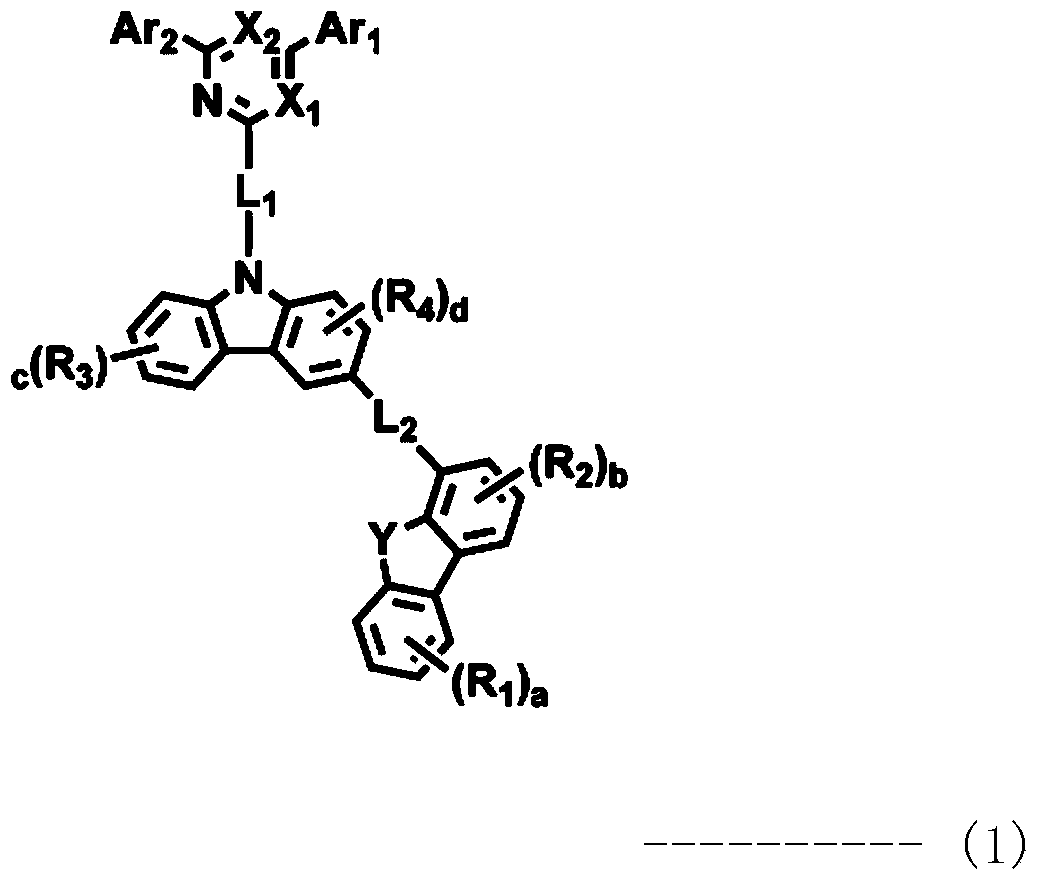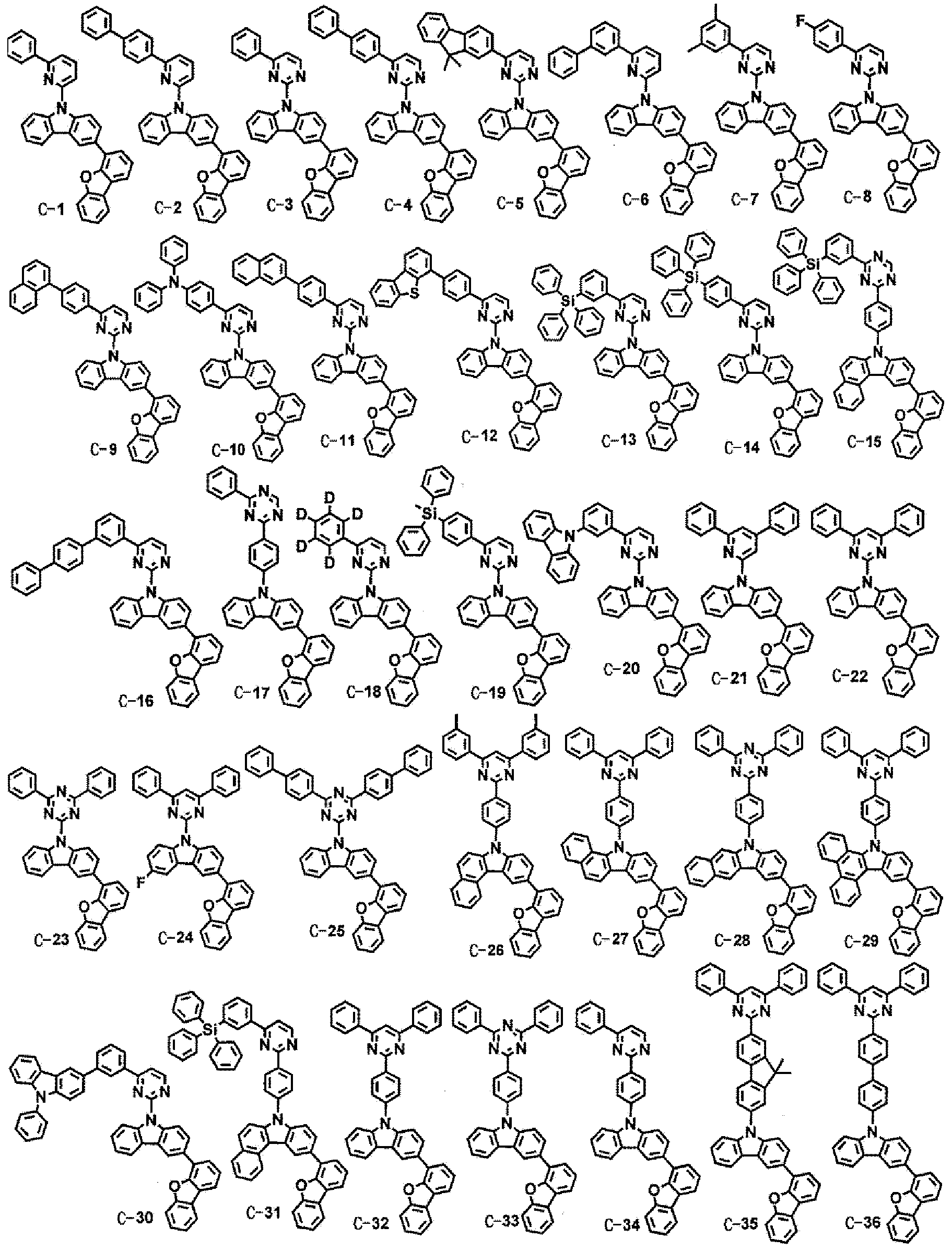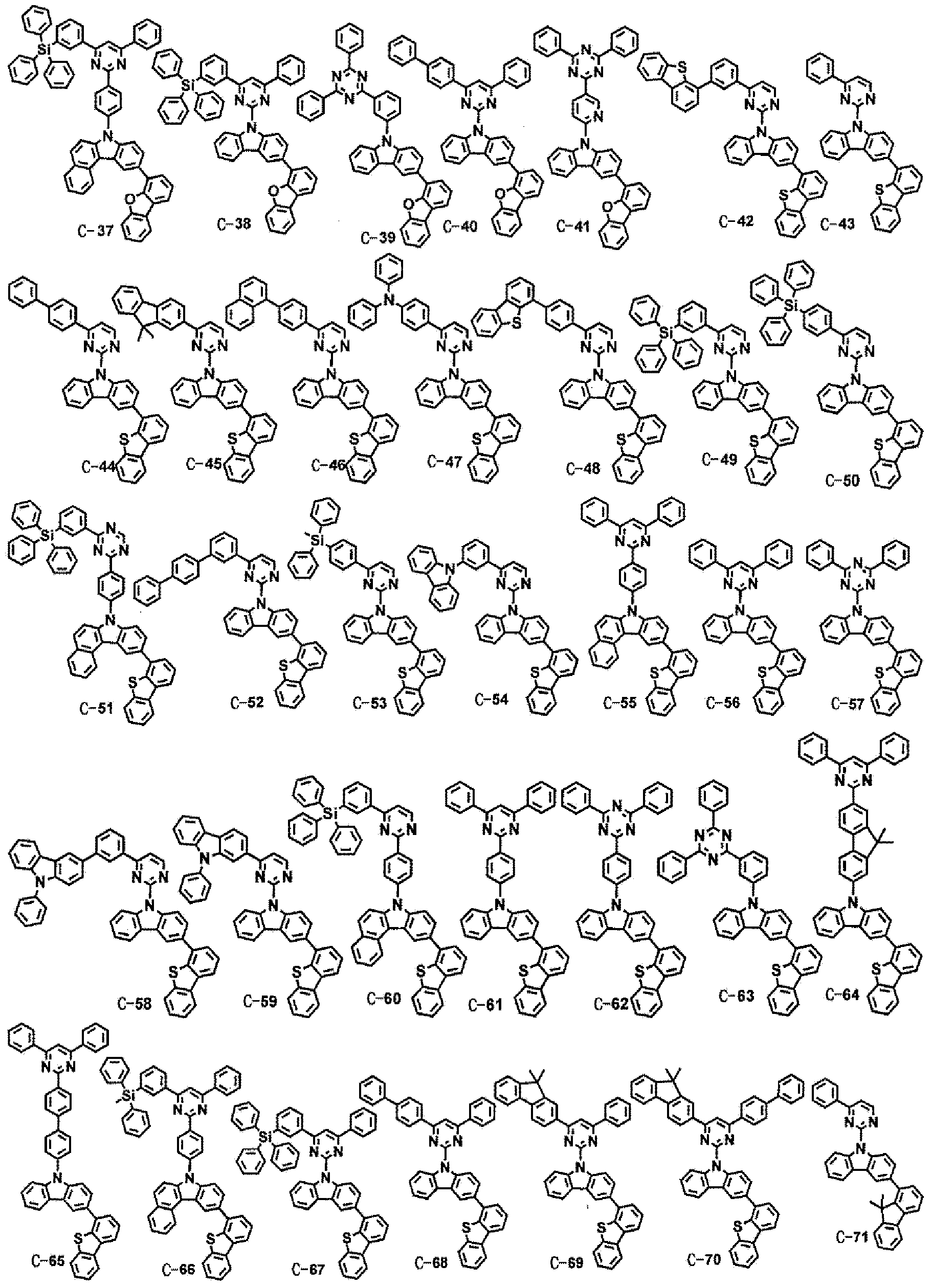9H-carbazole compounds and electroluminescent devices involving them
A compound, C6-C30 technology, applied in the field of organic electroluminescent devices, can solve the problems of short working life of organic EL devices, no disclosure of carbazole compounds, low glass transition temperature, etc., and achieve improved current characteristics and low driving voltage. , the effect of long working life
- Summary
- Abstract
- Description
- Claims
- Application Information
AI Technical Summary
Problems solved by technology
Method used
Image
Examples
Embodiment 1
[0061] Embodiment 1: the preparation of compound C-52
[0062]
[0063] Preparation of compound 1-1
[0064] Dibenzo[b,d]thiophen-4-ylboronic acid (14 g, 61 mmol), 3-bromo-9H-carbazole (10 g, 41 mmol) and K 2 CO 3 Pd(PPh 3 ) 4 (2.3 g, 2 mmol). The reaction mixture was stirred at 120°C for 5 hours, cooled to room temperature, and extracted with EA (800 mL). The resulting organic layer was washed with distilled water (200 mL), and distilled under reduced pressure to remove the organic solvent. The resulting solid was washed with methanol, filtered, dried, separated and recrystallized with a silica gel column to obtain compound 1-1 (10 g, 71%).
[0065] Preparation of compound 1-2
[0066] Diphenyl-4-ylboronic acid (50 g, 250 mmol), 1,3-dibromobenzene (46 ml, 380 mmol) and Na 2 CO 3 (66 g, 630 mmol) was dissolved in a mixed solvent of toluene (700 ml) / EtOH (320 ml) / distilled water (320 ml), and Pd(PPh 3 ) 2 Cl 2 (5.6 g, 8 mmol). The reaction mixture was stirr...
Embodiment 2
[0073] Embodiment 2: the preparation of compound C-54
[0074]
[0075] Preparation of compound 2-1
[0076] Carbazole (25 g, 149.5 mmol), 1,3-dibromobenzene (57 mL, 448.5 mmol), CuI (14.2 g, 74.7 mmol), ethylenediamine (5 mL, 74.7 mmol) and K 3 PO 4 (95 g, 448.5 mmol) was dissolved in toluene (450 mL), and the reaction mixture was stirred at reflux at 120° C. for 24 hours. After the reaction was terminated, the reaction mixture was extracted with EA. with anhydrous MgSO 4 The obtained organic layer was dried to remove residual moisture, distilled under reduced pressure to remove the solvent, and filtered through a column to obtain compound 2-1 (42 g, 85%).
[0077] Preparation of compound 2-2
[0078] After compound 2-1 (42 g, 130.3 mmol) was dissolved in THF (500 mL), the reaction mixture was cooled to -78°C. After 10 min, n-BuLi (67 mL, 169.4 mmol, 2.5M in hexane) was added slowly, and the reaction mixture was stirred for 1 h. Then, slowly add B(OMe) 3(23 ...
Embodiment 3
[0083] Embodiment 3: the preparation of compound C-56
[0084]
[0085] Preparation of compound 3-1
[0086] 2,4,6-trichloropyrimidine (10 g, 54.51 mmol), phenylboronic acid (16.6 g, 136.29 mmol), Pd(PPh 3 ) 4 (3.15 g, 2.72 mmol), 2M K 2 CO 3 (50 mL), toluene (100 mL) and ethanol (30 mL) were mixed, and the reaction mixture was stirred at reflux. After 4 hours, the reaction mixture was cooled to room temperature, and distilled water was added. The reaction mixture was extracted with EA. with anhydrous MgSO 4 The obtained organic layer was dried to remove residual moisture, distilled under reduced pressure to remove solvent, and filtered through a column to obtain compound 3-1 (7 g, 48%).
[0087] Preparation of compound C-56
[0088] After dissolving NaH (875 mg, 21.8 mmol) in DMF, the solution was stirred. After compound 1-1 (5.1 g, 14.5 mmol) was dissolved in DMF, the solution was added to NaH solution and stirred for 1 hour. After compound 3-1 (4.7 g, 17....
PUM
 Login to View More
Login to View More Abstract
Description
Claims
Application Information
 Login to View More
Login to View More - R&D
- Intellectual Property
- Life Sciences
- Materials
- Tech Scout
- Unparalleled Data Quality
- Higher Quality Content
- 60% Fewer Hallucinations
Browse by: Latest US Patents, China's latest patents, Technical Efficacy Thesaurus, Application Domain, Technology Topic, Popular Technical Reports.
© 2025 PatSnap. All rights reserved.Legal|Privacy policy|Modern Slavery Act Transparency Statement|Sitemap|About US| Contact US: help@patsnap.com



